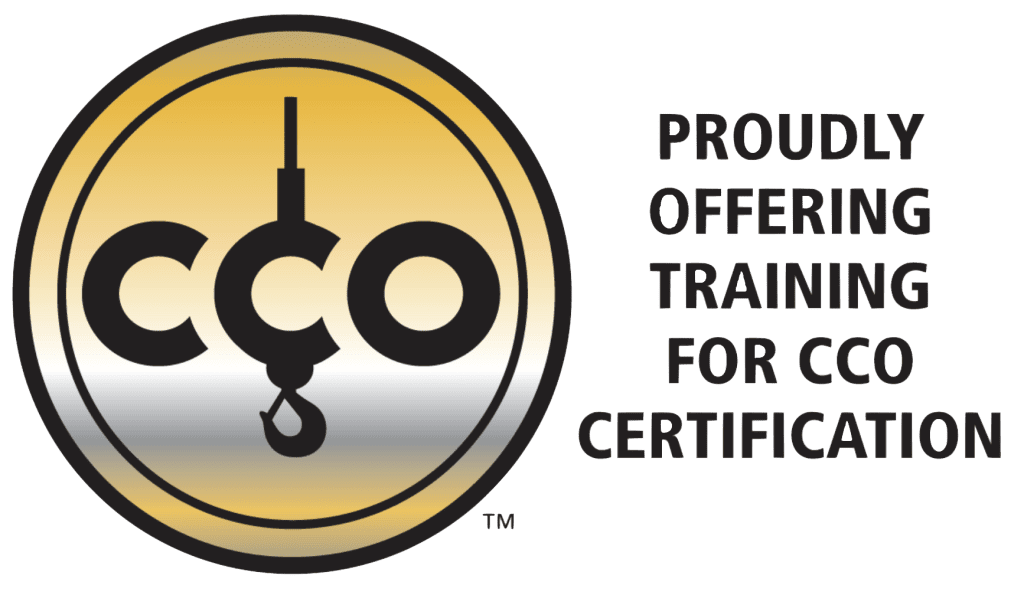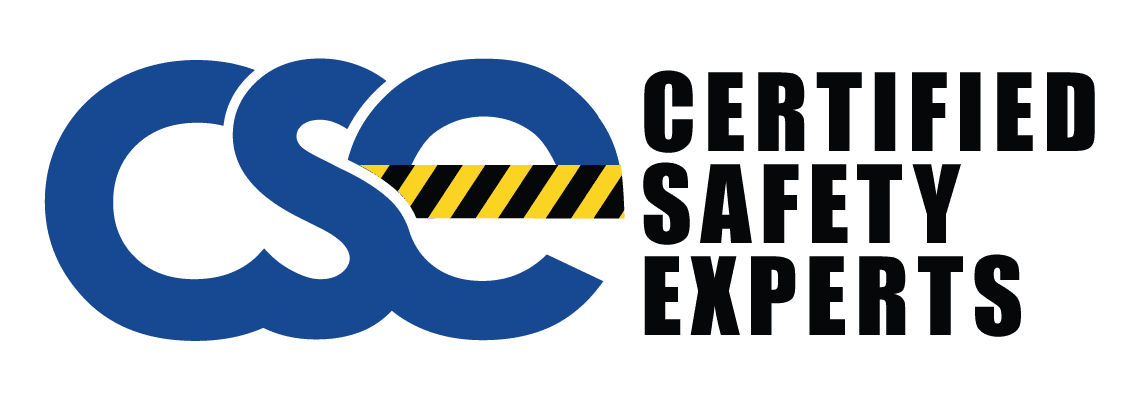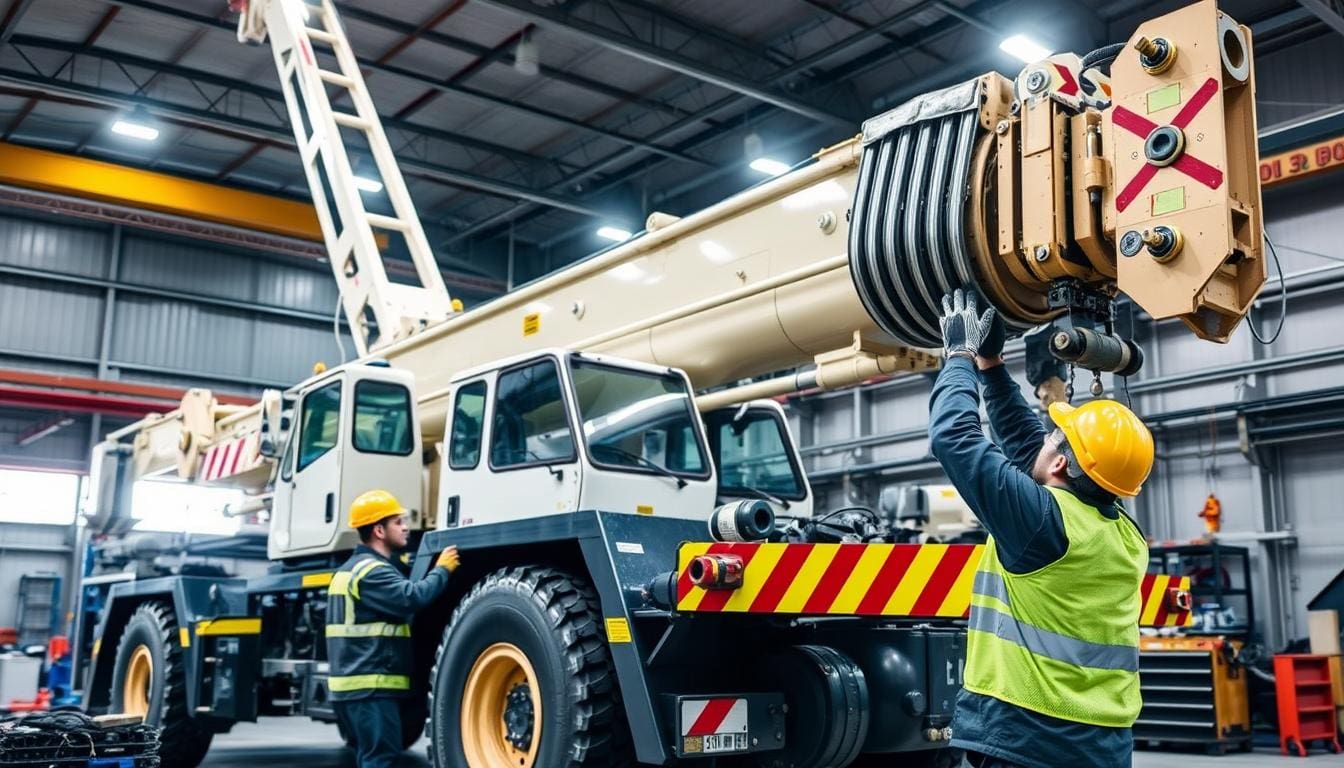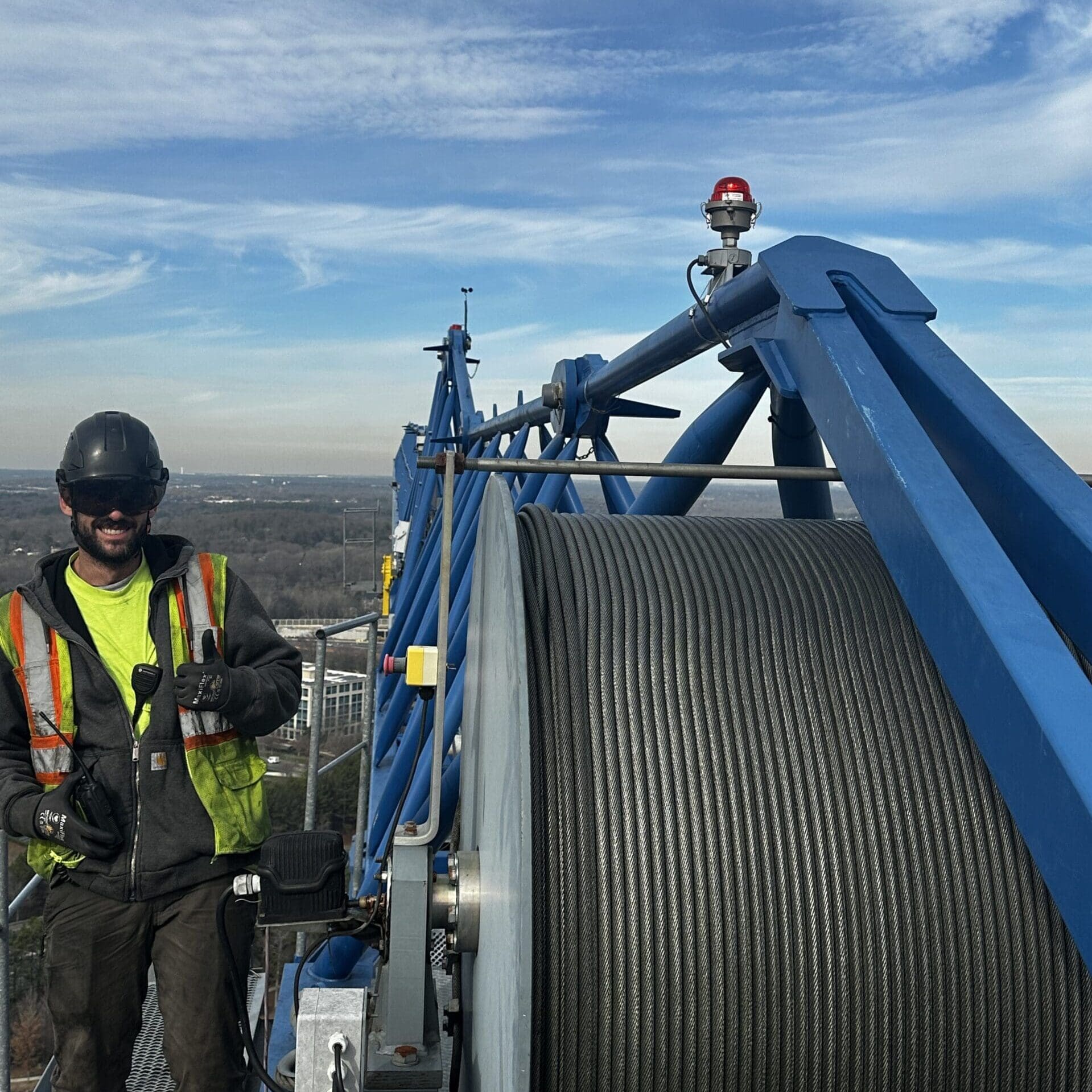We know how important it is to keep mobile cranes safe we believe that regular maintenance is key to preventing accidents its not just a routine task its crucial for keeping everyone safe.
Understanding the Importance of Mobile Crane Safety
Mobile cranes play a big role in construction. Following safety rules is key to avoiding accidents and saving lives. We’ll look at the risks and the safety steps needed to keep everyone safe.
Statistics and Consequences of Crane-related Incidents
Ignoring crane safety can lead to serious problems. In recent years, many people have died or been badly hurt in crane accidents. This shows why safety rules are so important:
- In the last ten years, crane accidents have been a big problem in cities.
- Most big accidents on construction sites involve cranes. This highlights the need for better safety.
- Most accidents happen because people don’t follow safety rules. This shows how crucial it is to follow the rules.
Key Safety Principles for Crane Operations
To keep workers safe, we need to follow some key safety rules:
- Hold regular safety talks and training to make sure everyone knows the rules.
- Make sure all crane work follows the latest safety standards.
- Do regular checks and maintenance to avoid mechanical failures that could cause accidents.
By following these safety steps, we can lower the number of crane accidents. This creates a safer work environment for everyone. Safety in crane operations is not just about following rules. It’s about protecting lives and keeping the construction industry safe.
Comprehensive Preventive Maintenance Practices
Keeping mobile cranes safe and working well is key in construction. A strong maintenance plan and a detailed inspection checklist are essential. They make sure the equipment works right and everyone stays safe. Let’s look at how to keep cranes in top shape.
Regular Inspection Procedures
At the heart of a good maintenance plan is regular checks. Our team uses a detailed checklist to check each crane. They look at the hoisting parts, brakes, hooks, and electrical systems. This way, we catch problems early and avoid delays and accidents.
Maintenance Scheduling and Documentation
Our maintenance schedule is very detailed. Each crane has a plan based on how much it’s used and how it’s done. We keep records of all repairs and updates. This helps us follow safety rules and manufacturer advice.
Essential Components to Monitor
- Hydraulic systems: Regular checks to ensure there are no leaks or drops in pressure which can affect crane performance.
- Structural integrity: Inspections for any signs of wear, cracks, or corrosion in the crane’s structure and boom.
- Safety devices: Testing of all safety devices, including overload indicators and emergency stop mechanisms, to confirm they are operational at all times.
Mobile Crane Safety: Training and Qualifications of Personnel
Keeping mobile crane operations safe depends a lot on the personnel competency of the team. We stress the need for certified crane operator training and ongoing education for everyone. This ensures that everyone knows the latest safety rules and how to operate, lowering accident risks and improving safety at work.
Here’s how we make sure safety and training are always a priority:
- We have strict hiring rules to pick only those with the right safety skills and experience.
- We provide excellent certified crane operator training that meets current standards.
- We offer ongoing education to keep our team informed about new safety rules and methods.
- We regularly check if everyone meets our high safety and operation standards.
These steps improve safety and give our team the skills and confidence to deal with tough situations. It shows our dedication to being the best at safety and operation.
Risk Assessment and Management in Crane Operations
At the heart of safe crane operations is a detailed risk assessment. This process carefully identifies and manages risks. It aims to prevent accidents and keep everyone safe.
Identifying Potential Hazards
Spotting hazards is the first step in our risk assessment. Knowing the different dangers helps us take steps to prevent them. These dangers include:
- Weather like high winds or extreme temperatures
- Challenges on the site, like uneven ground or tight spaces
- Equipment failures due to wear or misuse
- Errors made by operators or communication problems
Implementing Control Measures
After finding hazards, we put in place safety measures. These steps aim to either remove the danger or lessen its impact. Important safety steps include:
- Training and certifying crane operators and maintenance teams
- Using safety tools like anti-collision devices and load indicators
- Doing checks before starting work to make sure everything is safe
- Following strict rules for talking among site workers
Monitoring for Safety Compliance
The last part of our plan is to keep checking if safety rules are followed. This ensures crane operations stay safe every day. It also helps improve safety over time. Ways to monitor include:
- Regular checks and audits of how things are done and equipment
- Watching crane operations live through cameras and sensors
- Updating safety rules based on new standards
- Reporting and studying incidents to stop them from happening again
Innovations in Crane Safety and Maintenance Technologies
We’re exploring new tech that’s changing how we keep cranes safe. Key advancements include advanced safety systems, predictive maintenance, and IoT in crane operations. These changes improve safety and make managing cranes more efficient.
IoT technology lets us monitor cranes from afar and analyze data in real-time this is key for predictive maintenance it spots potential problems early, cuts down on downtime, and keeps sites safer.
- Predictive maintenance uses data to predict when equipment might fail. This makes cranes more reliable.
- Advanced safety systems use sensors and software to check for any issues. They ensure cranes operate safely.
These technologies boost safety and improve crane performance they also make equipment last longer. While the upfront costs are high, the long-term benefits are worth it for modern construction.
Creating a Culture of Safety in the Construction Industry
We are always working to make our sites safer. A strong safety culture is key to success. We aim to make safety a core part of our work, facing risks head-on with determination and smart plans.
Leadership’s Role in Safety Advocacy
As leaders, we do more than manage. We lead by example, pushing for safety first. We set high standards and show our team that safety matters. Our goal is to create safety policies that prevent problems and respond quickly when needed.
Encouraging Worker Participation and Feedback
Worker engagement is crucial for a safe work environment. We want our team to share their thoughts and ideas. Their real-world experience helps us improve safety measures. By listening and involving them, we build trust and teamwork, vital for a strong safety culture.
